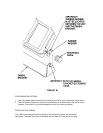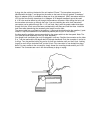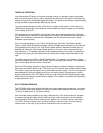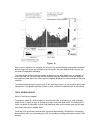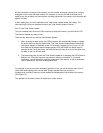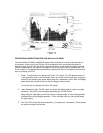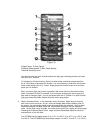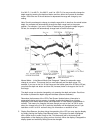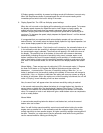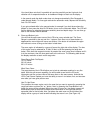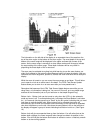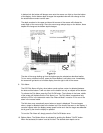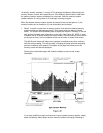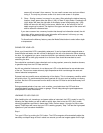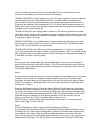If Display speed or sensitivity is pressed a chirping sound will indicate an incorrect entry.
When the Stop/Resume button is pressed again the unit will resume reading at the
immediate point at which the boat is sitting in the water.
6. Display Speed Set: The LCR has 8 display speed settings.
When the unit is turned on the display will be advancing at a medium speed. To increase
the display speed, depress the Speed Set and or hold it down to change rapidly. An
audible sound is heard each time the speed is advanced. When the limit has been
reached a chirping sound will be heard. At this point the speed will be advancing at its
maximum. To decrease the speed, simply depress the Speed Set and * until the desired
advance is reached.
It is suggested that you experiment with various display speeds until you achieve the
desired results. You should select the fastest display speed for high speed operation, but
use a slower display speed for idle or trolling speed.
7. Sensitivity: Automatic Mode: - Each time the unit is turned on, the automatic feature is on.
In the automatic mode the sensitivity is adjusted automatically to give a good return and
the correct depth range is selected. The word Auto will appear in the lower left corner of
the display. The sensitivity bar at the bottom of the screen will increase or decrease
automatically indicating the amount of sensitivity being used. In deeper water or soft
bottom conditions this bar will increase indicating more senistivity. In shallow water or
when a hard bottom is being read, the sensitivity needed to achieve a good return will be
less. Also in the automatic mode, the unit will black out the display beneath the bottom
line.
Manual Mode: - There are two ways of putting the LCR in the manual mode; (1) Depress
the Auto On/Off button or (2) Depress the Manual Set button and then either the
decrease or _• increase button. There are 15 sensitivity settings. When the * or • or
button is pressed once, the sensitivity setting at the bottom of the screen will change by
one division. If the • or A button is held down the setting will move up or down as long as
the button is held down. When the maximum or minimum setting is achieved, the unit will
make a "Chirping" sound indicating a limit has been reached.
Also, the word "max" will appear when the maximum sensitivity setting is reached.
In the manual mode everything below the bottom is no longer blacked out, therefore a
second return or double echo can be displayed if desired. (See Figure 17). Also, the
hardness of the bottom can sometimes be determined by the thickness of the bottom
return. For example, a hard or rock bottom will give a wider bottom return as compared to
a soft or muddy bottom.
Manual Mode
In manual mode everything below the bottom is not blacked out, so that the second
bottom echo can be seen.
Note: You will find the manual sensitivity control most useful when looking for smaller
targets such as smaller fish. In the automatic mode the computer might not be using
enough sensitivity to show smaller targets. At higher sensitivity settings more targets will
be seen. Therefore, you might want to use the automatic mode while running and then
use the manual mode for charting and finding fish.



